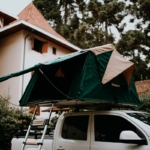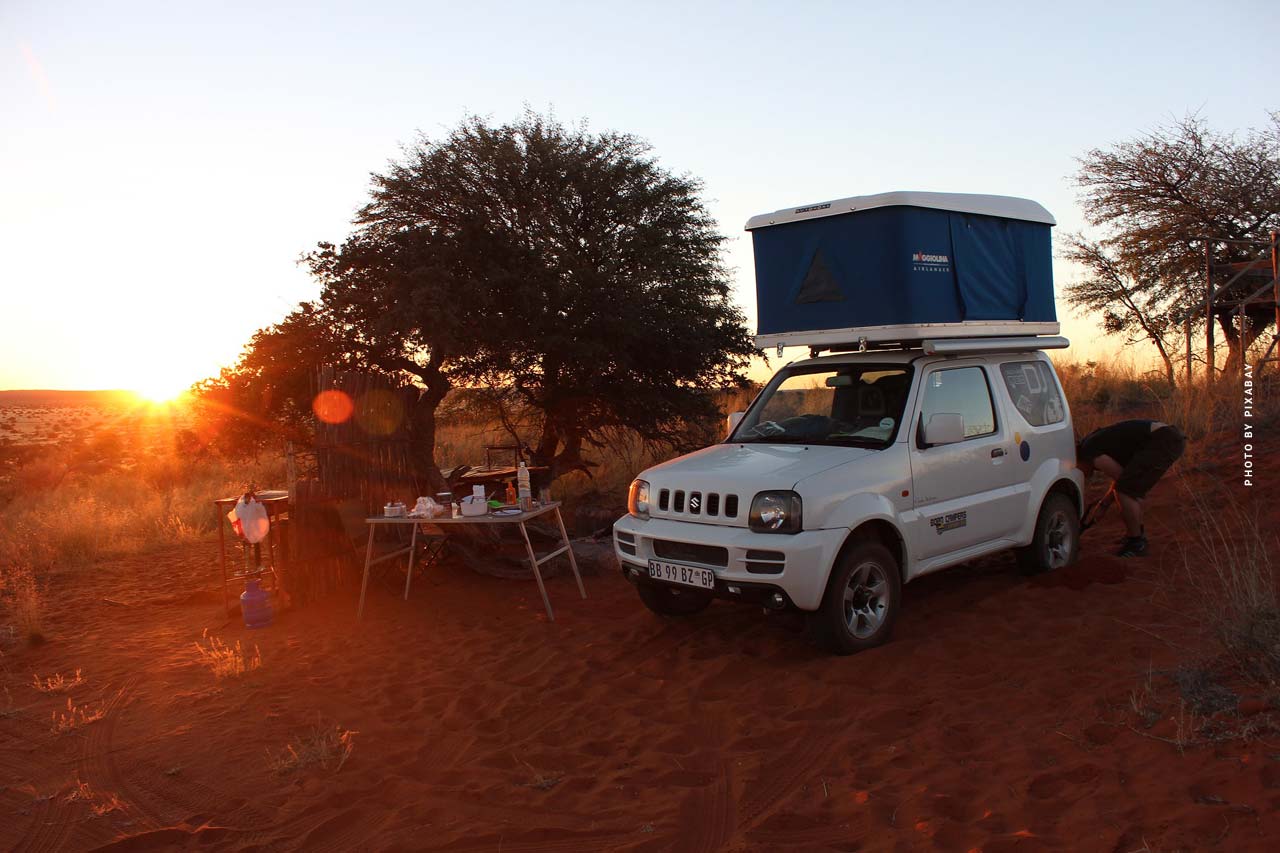Roof tent assembly: tips for assembly, roof load & safe camping
Roof tent setup – A roof tent is not only extremely practical, but also offers a comfortable sleeping option in the great outdoors. With a few simple steps and a little practice, adventure seekers can set up their sleeping space for camping very quickly. We’ll walk you through the steps, give you tips and share our recommendations for assembly. We also take a look at important aspects like roof load, choosing the right roof rack, and how to set up your roof tent safely even in stormy weather. Whether you’re an experienced camper or just diving into the world of roof tents, you’ll find the help and guidance you need to make your next vacation an unforgettable adventure.
Simply unfold: Assembly made easy
Setting up a roof tent is usually straightforward. Most roof tents can be easily folded out or extended, making tedious tent setup on the ground a thing of the past. Setup often begins with you setting up the rooftop tent either over the ground or the side walls. This involves carefully unfolding the tent canvas. It is important to be careful here to avoid damage to the roof tent.
A straight floor is not as important for the roof tent as it is for a conventional tent, since this one on the car roof gives you a straight floor to sleep on anyway. However, if the vehicle is on too sloping ground, it can be difficult to set up the tent correctly. The ground may then prevent you from setting up the ladder in a straight line. This would be unfavorable, because in many cases the ladder serves not only as access to the tent, but also as a support to keep the tent stable. So make sure that the ground is reasonably level.
Equipped for wind and weather: additional steps
In the next step, many roof tents have additional assembly steps to make the tent even more stable. In some cases, additional poles may be required, for example, on the windows of the roof tent. These poles help stabilize the tent and ensure that it keeps its shape, even in windy conditions. For really stormy nights, most roof tents also come with lines for guy ropes, so-called storm guy ropes.
With this step-by-step guide, you’ll have your roof tent up and running in no time:
- Set up over floor or side walls
- Carefully unfold the tent canvas
- Set up ladder (level floor)
- Attach additional bars
- If necessary: storm bracing
Structure in video: Learn fast & uncomplicated
Here you can see how easy and fast it is to set up a roof tent.
Roof rack & roof load: What you need!
First, you’ll need a roof rack or roof rail. This is your sturdy base to attach the roof tent to your vehicle. Make sure that the roof rack or roof rail has the required load capacity. For mounting, you would need proper fasteners, bolts and brackets to securely mount the roof tent on the roof of your vehicle. However, most roof tent stores offer on-site installation, which can make your job much easier.
- These are the things you should pay attention to before assembling and setting up your roof tent:
- Robust base: roof rack / roof rails for roof tent attachment
- Check load capacity: Roof rack / roof rails must be sufficiently strong
- Mounting requirements: fasteners, screws, brackets for secure mounting
- Professional help: roof tent stores often offer on-site assembly for convenience
Then you should also consider the roof load. But what is the roof load anyway?
How much roof load is needed for a roof tent?
The roof load of a vehicle refers to the maximum weight that can be safely transported on the roof. An approved roof load should compromise the stability and safety of the vehicle. You should be careful not to exceed this permitted roof load to minimize potential risks and accidents.
In the case of the roof tent, this only applies to the weight of the tent itself and the crossbars mounted on the roof rack or roof rails. If the specified roof load of your vehicle is 85 kg, for example, and your roof tent already weighs 80 kg including the mounting system, there is no reason to worry. This means you still have some weight left over for luggage.
- Roof load: Maximum weight allowed on the roof of a vehicle
- Concerns only the tent & crossbar on the roof rack
- Example: Roof load = 85 kg ⇒ Roof tent + roof rack = 80 kg (+5 kg luggage)
More about roof tent: size, manufacturer & comparison
Now you just need to find the perfect roof tent for you! These recommendations will help you:
Camping for two or with the family
To decide on the right size, you should first consider how many people you will be traveling with. If you still need extra space, then you should choose a larger roof tent.
Here you will find many tips for different roof tent sizes:
Roof tent manufacturer: Our recommendation
In addition to the different sizes, there are also different companies that manufacture roof tents. So that you don’t lose track of them, you can take a look at our favorites here.
Roof tent comparison: Your suitable roof tent
Looking for the right roof tent or strong accessories and equipment for the camping site? Here you will find our shopping recommendations:
Roof tent comparison










